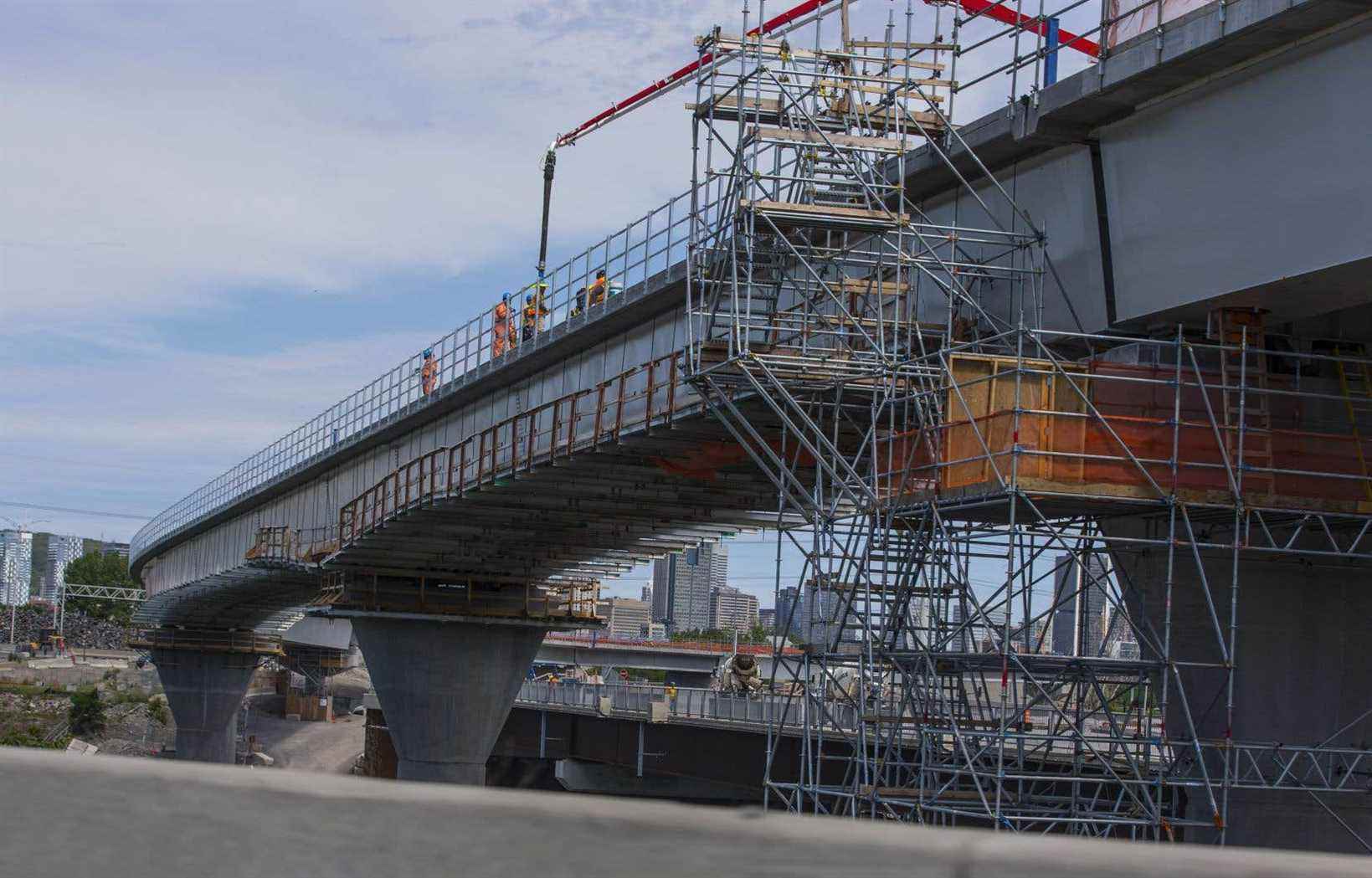The possibility of building a Metropolitan Express Network (REM) in the East without catenaries and its unattractive wiring is a delight for Mayor Valérie Plante, who has been pleading for months for better architectural integration of the transport project in the neighborhoods it will cross.
“I was very happy to hear our Prime Minister say that the REM project in Longueuil would have no catenaries, that there would be no wiring on the surface because I won’t hide from you that there is This is one of the problems of the REM de l’Est. There are others, but this is one that is important to preserve the heritage character of our neighborhoods,” she said when questioned on the subject on Tuesday at a conference of press on the certification of building owners.
She was reacting to comments made the day before by Prime Minister François Legault about the REM project on the South Shore. Passing through Longueuil to meet Mayor Catherine Fournier, he mentioned that it was possible to improve the aesthetic appearance of REMs and their urban integration. “There are also solutions for spinning. I don’t want to pre-empt a presentation from the Caisse de depot, which we hope will come soon,” he said. “For me, the REM on the South Shore will be very beautiful and very well integrated into the architecture of the different places where it will pass. »
Sources well acquainted with the eastern REM dossier have expressed a certain astonishment and skepticism that a REM without catenaries could be envisaged. Remember that CDPQ Infra, the Caisse subsidiary that manages REM projects, chose catenaries for the REM that links Brossard to Montreal, in particular because this technology is more appropriate than that of the third rail in snowy conditions.
Invited to clarify François Legault’s remarks, his press secretary, Nadia Talbot, remained cautious. “As the Prime Minister mentioned yesterday, we would first and foremost like the Caisse de dépôt to submit its project before commenting further on its development,” she indicated in an email to the Duty. “The government and the municipalities concerned agree perfectly on the fact that we all want the project to be as well integrated as possible into its environment. »
Multiple solutions
Is it realistic to build an REM without catenaries given the Quebec climate? Pierre Barrieau says yes. Expert in transport planning and lecturer at the University of Montreal, he indicates that if CDPQ Infra chose catenary technology for the first REM, it is because in addition to having to comply with punctuality and reliability, it had to ensure the profitability of the project. “We can consider that what was built in the first phase of the REM is the most “engineered” version possible. This is the version that was designed to cost as little as possible, to be as reliable as possible and to require as little maintenance as possible,” he explains. “There was no incentive to invest in something that would be prettier and less reliable. »
But according to him, several solutions exist to improve the aesthetics of REM, although they are generally more expensive. In particular, it is possible to reduce the size of the cable supports or to reduce the visual presence of the counterweights which are used to maintain the tension of the wires, he says. In Europe, tram catenaries in urban areas are more discreet, he argues.
Other technologies are also possible. Even if the supply with a third rail — which allows the train to be supplied by a side rail like the Montreal metro — is less suitable for winter conditions, it is realistic to consider it provided that we make sure to clear the snow, he believes. The Toronto subway, which runs partly outside, uses this technology, as does Amtrak, particularly in a segment on the line between New York and Montreal, explains Mr. Barrieau. A broom can for example be placed on each train so that with each passage, the snow is removed, he says.
Other systems rely on induction power or ground power, as is the case in Bordeaux, which allows the tramway to travel without catenaries in the historic district, explains Pierre Barrieau.
Hydrogen
Battery technology is also possible, but this equipment adds weight to the trains, which can be disadvantageous when they run on overhead structures. Finally, hydrogen — which can be produced in a non-polluting way in Quebec — could be chosen to power the trains, suggests the expert.
CDPQ Infra’s intentions are not yet known, but Pierre Barrieau believes that at least François Legault’s remarks have made it possible to launch a discussion on catenaries and the architectural integration of transport infrastructures.
Valérie Plante, who is calling on the government to play a decision-making role for the City of Montreal within a joint project office for the Eastern REM, intends to use such a body to request a train without catenaries. “Of course, if I am sitting at the decision-making table and we are told that for the Montreal REM, we must have catenaries and that for the South Shore REM, we say [qu’ils ne sont pas nécessaires], of course I will ask myself questions. »
With Zacharie Goudreault.
